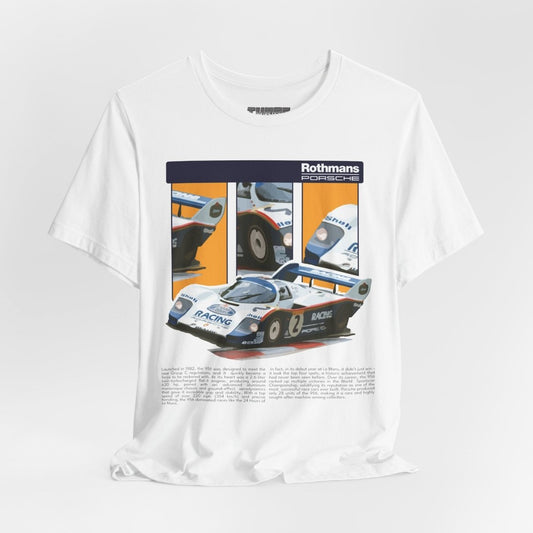
Porsche 930 turbo "The Widowmaker" - Legends Explained Part. 3
Share
The Porsche 911 Turbo, internally designated the 930, emerged in the mid-1970s as a bold statement from Stuttgart, representing a significant leap in performance for a road-going 911. Its reputation, often associated with a distinct driving character and formidable power, solidified its place as a definitive sports car. This article explores the elements that contributed to the 930 Turbo's enduring legacy.
Quick Answers:
- Significance: Porsche's first production turbocharged 911.
- Key Features: Wide body, "whale tail" spoiler, and substantial turbo lag.
- Engine: Flat-six, air-cooled, single turbocharger.
- Driving Character: Known for its raw power delivery and demanding handling.
- Impact: Set a new standard for high-performance road cars.
The Making of a Legend
The development of the 911 Turbo (930) was a direct application of Porsche's experience with turbocharging in motorsport, particularly from its dominant 917 Can-Am and 935 race cars. While turbocharging in road cars was not entirely new, Porsche's implementation aimed to deliver a level of performance previously unseen in a production 911. Introduced in 1975, the 930 was initially conceived as a homologation model for racing, but its impact as a road car quickly overshadowed its competitive origins.
Officially Turbocharged Street Car
At the heart of the 930 Turbo was its turbocharged, air-cooled flat-six engine. Initially a 3.0-liter unit, it grew to 3.3 liters in 1978. This engine employed a single, large KKK turbocharger. This setup resulted in a distinct power delivery characteristic: significant "turbo lag," where there was a noticeable delay between pressing the accelerator and the full surge of power arriving. Once the turbo spooled up, however, the engine produced a formidable output (260 hp for the 3.0L, 300 hp for the 3.3L), launching the car with considerable force. This unique powerband contributed significantly to the car's challenging yet rewarding driving experience.
The Iconic "Whale Tail" and Wide Body
Visually, the 930 Turbo was unmistakable. It featured significantly wider wheel arches to accommodate wider tires, necessary to help put its substantial power down. The most recognizable feature, however, was its large, distinctive rear spoiler, affectionately known as the "whale tail." This spoiler served a dual purpose: to provide downforce at high speeds for stability and to house the intercooler, which was crucial for cooling the turbocharged engine's intake air. These design elements became synonymous with the 911 Turbo's aggressive performance image.
Where the reputation comes from
The 930 Turbo earned a reputation for being a demanding car to drive, especially at the limit. Its rear-engined configuration, combined with the sudden onset of turbo power, could lead to challenging handling characteristics for inexperienced drivers, particularly in wet conditions or during cornering. This characteristic, often described as "snap oversteer," required precise throttle control and driver skill. Despite this, or perhaps because of it, the 930 offered a visceral and engaging driving experience, a direct connection between driver and machine that appealed to enthusiasts.
Innovation and Market Impact
Beyond its specific performance characteristics, the 930 Turbo represented a significant step forward in Porsche's engineering. It brought forced induction to a mass-produced sports car in a compelling way, influencing future generations of high-performance vehicles. Its success established the "Turbo" moniker as the pinnacle of performance within the 911 range, a designation that continues to this day. The 930 cemented the 911's ability to be a world-beating performance machine.
Final Verdict
The Porsche 911 (930) Turbo established its legacy as a definitive sports car through its pioneering use of turbocharging in a production 911, its distinctive wide-body design with the iconic "whale tail," and its powerful yet demanding driving dynamics. It was not merely a faster 911; it was a redefinition of what a high-performance road car could be. The 930's raw power delivery and engaging character ensured its place as a benchmark for performance and an influential machine in automotive history.




